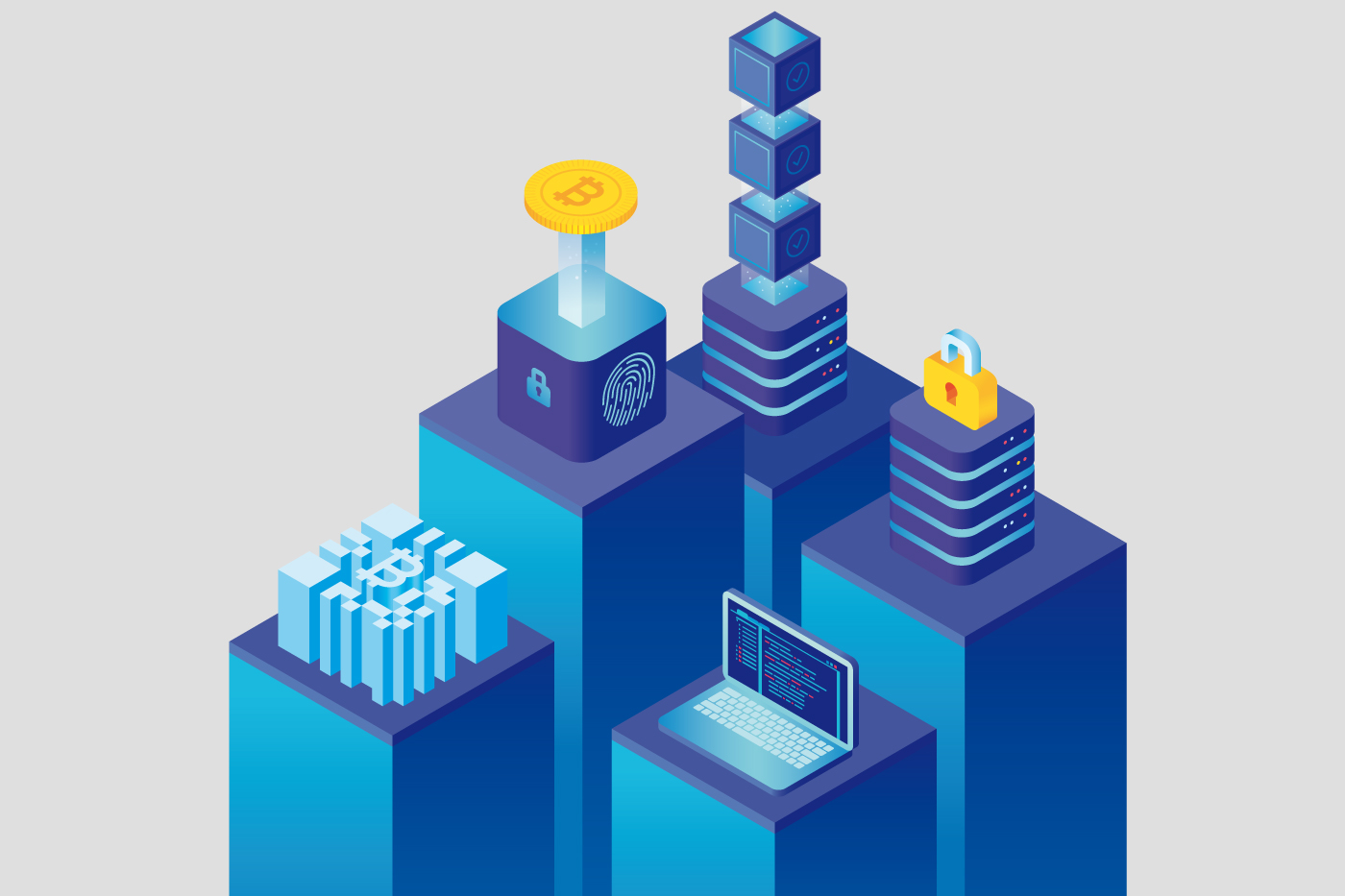Repo by the Minute
A US$13 trillion market is slowly getting tokenised.

By Kannan Agarwal
On 17 June 2021, Goldman Sachs executed its first trade on JP Morgan’s blockchain-based platform for repurchase agreements (repo), Onyx Digital Assets Network. Joining the Onyx-based repo syndicate enabled Goldman Sachs to trade repos with other third-parties within the network. The initial trade involved swapping a tokenised version of the US Treasury bond for JPM Coin, the digital coin developed by the bank and used for internal purposes, and took precisely three hours and five minutes lasting from origination, to trade, and the subsequent repurchase of the bond. In this instance, turnaround time is critical as the seller is charged interest by the minute.
As far as financial products go, the repo market is one of the slowest to evolve from manual voice-trading operations. Every day, between USD2 trillion and USD4 trillion repos change hands, allowing market participants to tap into low-cost secured financing for more efficient capital allocation. Institutional investors such as asset managers, money-market funds, and corporations with underutilised cash balances can also opt to invest their cash on a secured basis. Finally, central banks use it as a monetary policy instrument by temporarily providing or removing liquidity from the financial system in order to promote stability and manage market expectations.
The ‘electronification’ of repo has its proponents and detractors in the market. On the one hand, these smart-contract repos solve some big issues that have plagued the financial sector, especially around counterparty risk. However, its use seems to best serve short-dated intraday repo trades for dealers, less so for money-market funds although financial institutions and fintech are testing its viability.
Securities advisory firm, Finadium, in its article, Tokenised Repo for Cash Providers: Solving Settlement Problems, reports: “…that the tokenisation of repo is a good idea, but current product designs are likely to inhibit cash provider adoption where it matters most: at money market funds and central counterparties. Making the leap from concept to reality for these firms means engaging with the legal and settlement mechanisms that have made repo into the successful USD13.4 trillion marketplace it is today. Without it, tokenisation may offer elegant solutions for dealers but may stall there.”
Repos are short-term borrowings raised by dealers who sell their government securities to another party with the promise of a buyback at a slightly higher price, typically the next day, but as the Onyx repo platform proves, smart contracts by the minute are possible.

Although simple, the old-school repo process is fraught with challenges:
+ Failure to deliver. There are two points in time in which these could occur – at the beginning of a repo when the seller fails to deliver the collateral security (government or corporate bonds) to the buyer, or at the end when the buyer fails to deliver to the seller. In either case, it triggers a series of actions that need to be negotiated through consensus. If the parties had pre-agreed from onset of the contract to treat a failure to deliver the securities as a default, the buyer can declare that the seller is in default which triggers a series of actions. One action is a mini close-out, where the buyer exercises his right to terminate the failed transaction and the difference must be settled at the seller’s cost. However, mini close-out mechanisms are expensive and, in practice, exercised only in extreme cases where the relationship between the seller and buyer breaks down. This is the reason why many brokers still rely on their mobile phones and strength of relationships to negotiate instead of transition to an electronic repo platform.
There are additional costs and risks. There is reputational harm to both the broker and the financial institution that fails to deliver. According to BNY Mellon, in the US, every day, roughly 2% of all Treasury and mortgage-backed securities set to change hands between buyers and sellers do not end up with their new owners by the time they are supposed to arrive. This could trigger millions of dollars in penalty fees daily for global financial markets. Buyers who never received the securities but had plans to enter this into their inventories will have to find late-in-the-day alternatives (e.g. borrow cash or other high-quality securities) to cover client activities, but last-minute borrowing comes at a premium.
+ Counterparty risk. Collaterals are rendered worthless if a default is called. Delays in delivering the security could stem from temporary operational problems beyond the seller’s control, such as infrastructure frictions, market illiquidity, and not necessarily credit issues. For as long as both parties agree the contract remains in force, the buyer can exercise his/her discretion to accept the delay and settle only upon successful delivery of the security collateral. This is a disadvantage to the seller who will still need to pay the interest on the repo even if he/she did not have access to the buyer’s cash.
If defaults go above the normal daily threshold, this will lead to a crisis of confidence in the repo market. This recently occurred when the uncertainties of Covid-19 saw a spike in demand for US Treasury notes, resulting in an above-average number of settlement fails. The Federal Reserve stepped in to buy up the excess securities and counter threats to liquidity in the system.
+ Collateral management. This involves not just dealing with the features of the collateral (coupon, dividend, substitution addressing failures-to-deliver) throughout the term of the repo, but also accurately calling for variation margins whenever the collateral’s value rises or falls in order to rebalance cash and collateral. Although organisations like the International Capital Market Association issue guidance on efficient variation margining, the ability to accurately call for variation margins depends on the skills, knowledge, and negotiation skills of the respective dealer, and allows financial institutions to optimise use of their collateral.
How, then, does blockchain technology mitigate these risks?
Repo tokenisation revolves around the concept of digitising and transferring the rights of the security or pool of securities. Essentially, the seller places its pool of securities in one custody account. The blockchain administrator then issues a token against this pool of securities to the seller, which marks the start of a tokenised repo. Whoever is logged as the owner of this digital asset on the blockchain can freely transfer or trade this repo token 24/7 with finality, knowing that the underlying securities settlement will be done in accordance with the pre-set rules of the transfer. For repo buyers, they can bid on the entire token or proportional units of it, knowing that the underlying pool of securities is intact and transferable. Buyers will prefund a cash account that is held with and controlled by the blockchain operator, who maintains the ownership ledger. Once a deal is struck, the smart contracts running on a blockchain network make it possible for the settlement of both purchase and sale of the tokenised repo to occur simultaneously, similar to the physical delivery-versus-payment/receipt-versus-payment settlement methodology for the outright purchases of securities.

In August 2022, Nyela Graham, a reporter for online financial technology news portal WatersTechnology, interviewed key personnel from JP Morgan for insight into the investment bank’s blockchain-based Onyx Digital Asset network and its intraday repo solution, developed after years of research and development on blockchain use-cases. Below is an excerpt of the article, Retooling Repo: How Broadridge, Bloomberg, Tradeweb, and JP Morgan Are Modernizing Repurchase Agreements.
The bank was looking to identify use cases in which the then-fledgling technology could create new products or bring efficiency to existing ones. During those years of research, [Tyrone] Lobban, [head of blockchain launch and Onyx Digital Assets at JP Morgan] says the bank executed close to 100 proofs-of-concept, some of which included matching trades between brokers and custodians and corporate actions processing.
In 2017, attention shifted to the tokenisation of bonds by representing them on a blockchain. Through a partnership with the National Bank of Canada in 2018, JP Morgan issued a USD150 million, one-year floating-rate Yankee certificate of deposit using blockchain technology.
The Onyx platform would be born in October 2020, building on the idea that a traditional asset could be represented on-chain.
“The idea here is that we should be able to represent any type of traditional asset on-chain and start to use a blockchain for faster settlement, more transparency around that settlement, reducing fails processes, and having stronger guarantees around the delivery of assets in exchange for payments,” Lobban says.
The intraday repo solution, launched two months after Onyx, allows JP Morgan clients to borrow funds intraday from the bank on a secured basis, while putting up collateral in the form of tokenised US treasuries.
“Because it’s all happening on the same shared ledger, we can leverage things like smart contracts, and we can get much more precise about the length of time that our clients actually need to borrow these funds for,” Lobban says. Instead of entering a repo transaction that has a standard overnight maturity, a client could theoretically borrow a billion dollars for three hours and return it before lunch.
In May, the bank launched the Tokenised Collateral Network on Onyx Digital Assets. Lobban says the work around the intraday repo solution led to a broader thesis around generally improving collateral and representing different types of assets on a blockchain.
“In the collateral markets, there’s not just the challenge around the settlement timeframes alongside the need to move pieces of collateral, which you are looking to deploy in lots of different places, whether through tri-party agents or through different bilateral counterparties,” says Thomas Pikett, vice president of Trading services product management at JP Morgan. “It’s also about being able to make the maximum use of your asset pool available as collateral.”
Like many firms and providers that embrace emerging technology, JP Morgan is aiming to create a service that clients can easily acclimate to. A representation of an asset should be as close to an asset as possible, with the accordant reference data, such as an ISIN (International Securities Identification Number), Pikett says. The record of ownership should be obvious and as easy to understand as a traditional asset.
“It’s quite powerful in itself, because you can get the benefits of blockchain, you can get the benefits of tokenised assets, but you’re not needing to rebuild systems to understand a new funky asset,” he says.
As the more bespoke components of fixed-income markets have proved resistant to change, sources agree that a full overhaul of the existing workflows in the market is not welcome, nor possible. But if it’s true that an efficient bond market is only as efficient as its repo market, then change is necessary and coming. Keeping familiar processes and frameworks in place may coax even the most reluctant of traders into the digital age.
Kannan Agarwal is a content analyst and writer at Akasaa, a boutique content development and consulting firm.